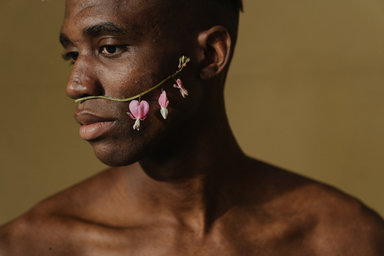Skin Cancer: How to Identify and When to See a Professional

May is Skin Cancer Awareness Month. Despite phrases that continue to uphold the youthfulness of melanated skin, “Black don’t crack,” it is also essential to remember that melanated skin can also get sick. Research shows more people are diagnosed with skin cancer than any other cancer combined. According to the Skin Cancer Foundation, 1 in 5 Americans will develop skin cancer by 70. The numbers show that skin cancer is more prevalent than many believe.
As melanated individuals, we must understand that our natural skin can only protect us for so long. Therefore, we need to be taking care of our skin health which also looks like covering our skin and utilizing sunscreen. Studies show that the 5-year survival rate of melanoma in Black people is 25% less than in White people due to cancer developing in more hidden areas.
Skin cancer develops from constant exposure to the sun and often starts with a small brown or red blemish (sometimes white) where the cancer is growing. An individual might also begin to see moles appear within the surrounding area.
Parts of the body such as the arms, legs, chest, and face continuously within the sun will be impacted. However, places such as the top of the head, palms of hands, toes, and ears are also susceptible to developing skin cancer. Therefore, it is essential to look over your skin daily and note any changes in texture or new blemishes. Understanding the different forms of skin cancer below can also help bring awareness and help others seek treatment.
Primary type 3 forms of Skin Cancer as outlined by Cleveland Clinic:
- The most severe form of skin cancer spreads throughout your body, even within your internal programs.
- A Brown patch, bump, or mole is itchy, bleeding, or changing size.
- If you start to notice patches or moles changing size and bleeding on parts of skin most at risk for sun exposure, seek a professional.
- The most common sun-exposed skin cancer appears on the parts of bodies most in the sun—legs, arms, face, etc.
- Cancer is slow progressing and usually does not spread to other parts of the body.
- Most common in sun-exposed areas and can impact mucus membranes and genitalia.
- The skin may become very rough and scaly and peel or itch and become crusty. One can also notice a firm pink or red nodule on the skin.
If you notice any changes to your skin, visit a dermatologist for an evaluation. A procedure such as a biopsy removes a sample of the tissues to evaluate. If cancer is presented in the skin, operations such as Mohs surgery or cryotherapy may be performed.
It is important to remember that the sooner an evaluation is done, the sooner skin cancer can be treated. It is also critical that we remember to take care of our skin and stop unnecessary skin exposure daily. Yes, melanated people, you can still take that picture of yourself sunkissed and quickly head back inside or put a hat on.
Melanated skin also no longer has to wonder what type of skin cancers look on their skin. Thanks to Vaseline x HUEDs database “See My Skin,” photos of different skin conditions such as cancer and eczema are available for review. In addition, See My Skin, a dermatologist-backed platform, was created, so those with melanated skin no longer have to wonder about their skin conditions.
Keeping your skin covered, sunscreen, hats, shades, and platforms like See My Skin are ways to ensure lasting healthy skin. Also, find a dermatologist who knows your skin needs under the directory at HUED. Summer may be approaching, but that doesn’t mean sun safety for your skin gets put on the back burner.
Stay connected to us on Instagram @HUEDCO
Site content is provided for informational purposes only and is not intended to be a substitute for professional medical advice, diagnosis, or treatment.


